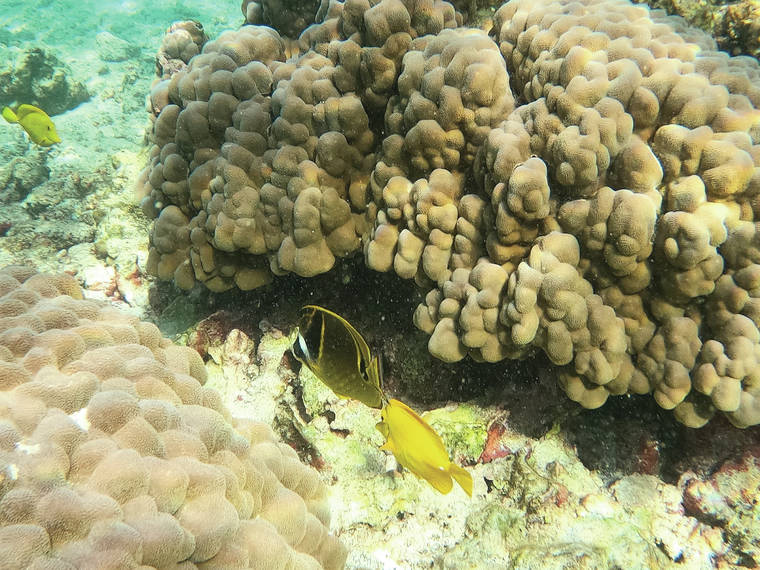Kahaluu Beach Park will be closed to the public during the week of May 28 to June 5 to enhance the spawning cycle of vulnerable cauliflower coral.
Kahaluu Beach Park will be closed to the public during the week of May 28 to June 5 to enhance the spawning cycle of vulnerable cauliflower coral.
The state Department of Land and Natural Resources Division of Aquatic Resources and The Kohala Center, a nonprofit organization that administers the Kahaluu Bay Education Center, are requesting the public’s cooperation to stay out of the bay during this critical time period. Spawning happens just once a year.
“While the park is closed, we are asking everyone to avoid snorkeling or swimming in the bay,” said Cindi Punihaole, Kahaluu Bay Education Center director. “During these spawning events, corals emit reproductive materials known as gametes into the water column, which are carried by the tides to mix and generate planktonic coral larvae. When given a chance to settle undisturbed, the gametes have a greater chance of settling and growing in the bay.”
Fewer people in the water enhances the spawning of cauliflower coral (Pocillopora meandrina), according to the Division of Aquatic Resources.
Cauliflower coral was once abundant on shallow coral reefs along West Hawaii, including Kahaluu Bay. However, environment stressors and very high ocean temperatures impacted West Hawaii in 2015 and again at the end of 2019, causing catastrophic bleaching and mortality for more than 90% of the Kahaluu Bay population.
The County of Hawaiʻ has worked with The Kohala Center and community stewards over the past three years to close the park during specific moon phases in mid to late spring and to educate visitors about this natural phenomenon and the importance of minimizing disturbances to the corals during this time.
“We totally support this voluntary measure as natural reproduction events are critically important,” said Brian Neilson, DLNR-DAR administrator. “With the absence of daily visitors and subsequent reduction in physical damage and impact of chemical sunscreens, growth and recovery along the shoreline has already been documented. Research has shown that it can take up to 24 hours for corals to successfully reproduce and settle properly.”

Subscribe today for unlimited access.
Already a subscriber?
Login
Not ready to subscribe?
Register for limited access.
If you have a print subscription but require digital access,
activate your account.






